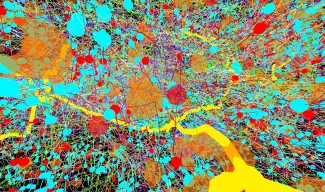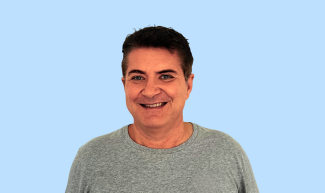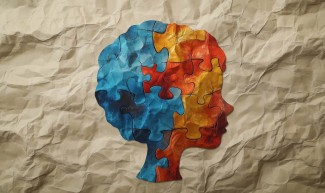Primary orthostatic tremor (POT) is a rare and poorly understood neurological disorder. It presents as a very rapid tremor (not visible to the naked eye) of the legs and trunk, causing a feeling of instability and fear of falling. The symptoms appear when standing still (orthostatism) and disappear when walking or leaning on a support. This disorder has an important impact on daily life activities done in a standing position (shower, in line, kitchen, etc…) with a strong impact on the quality of life of patients.
The disorder generally appears between the ages of 50 and 60 and affects women more often than men. To date, drug treatments have had little or no effect on the symptoms of POT. A few patients have been treated with deep brain stimulation, a technique that involves implanting electrodes in the brain, as in essential tremor, but the effects have been minimal or inconclusive (Aptes | Association of people affected by essential tremor). At Paris Brain Institute, the “Mov’it” team (normal and abnormal motor control: movement disorders and experimental therapeutics) co-directed by Profs. Vidailhet and Lehéricy, is interested in movement disorders and, in particular, POT.
A study led by Jean-Charles Lamy, member of the Mov’it team and operational manager of PANAM the platform for the exploration of movement at Paris Brain Institute has just shown, thanks to research, that trans-spinal electrical stimulation improves both the time in a standing position and reduces the amplitude as well as the frequency of tremor. This study is published in the journal “Movement Disorders”.
The causes of POT are still unknown. But the mechanisms are beginning to be better understood. Our teams have identified a “communication” disorder between neurons in the brainstem (contributing to the control of body position), the cerebellum (controlling balance and coordination of movements) and the cerebral cortex (directing voluntary gestures). In addition, shaking muscles send altered sensory messages (proprioception) via the spinal cord to the cerebral cortex, distorting the perception of body posture when standing. This has led to the implantation of electrodes in the spinal cord of some patients, but this neurosurgical technique is very invasive.
The study conducted on 16 patients suffering from POT at Paris Brain Institute uses a non-invasive technique of electrical stimulation of the spinal cord, through the skin, thanks to localized stimulation (device dedicated to research not yet available for patient care).
The results show that after a single stimulation, tremors are reduced and the time patients spend standing without support is increased.
This study constitutes a proof of concept of the effect of trans-spinal electrical stimulation for future clinical trials and opens the way to the prospects of an effective non-invasive treatment of POT.







